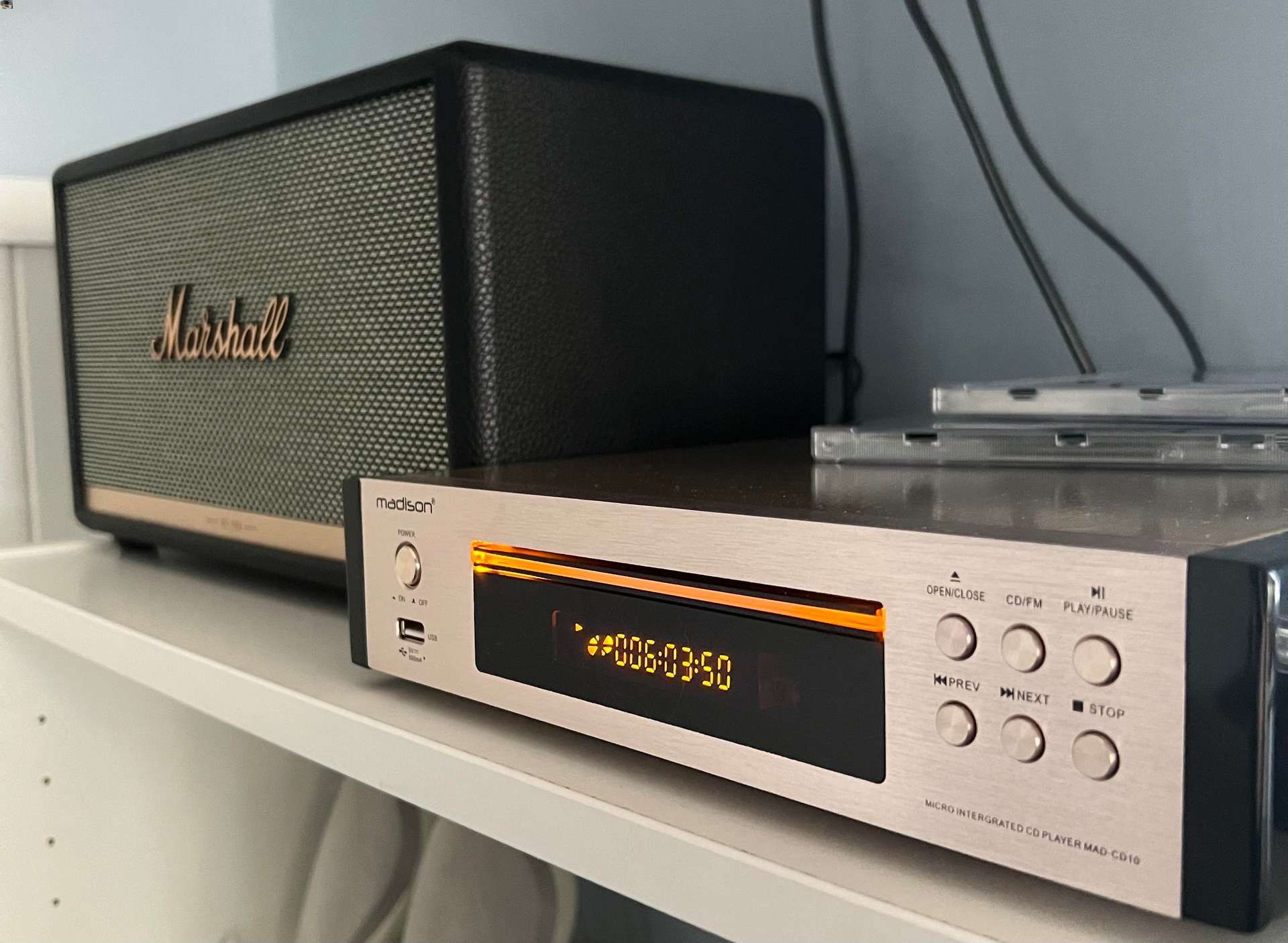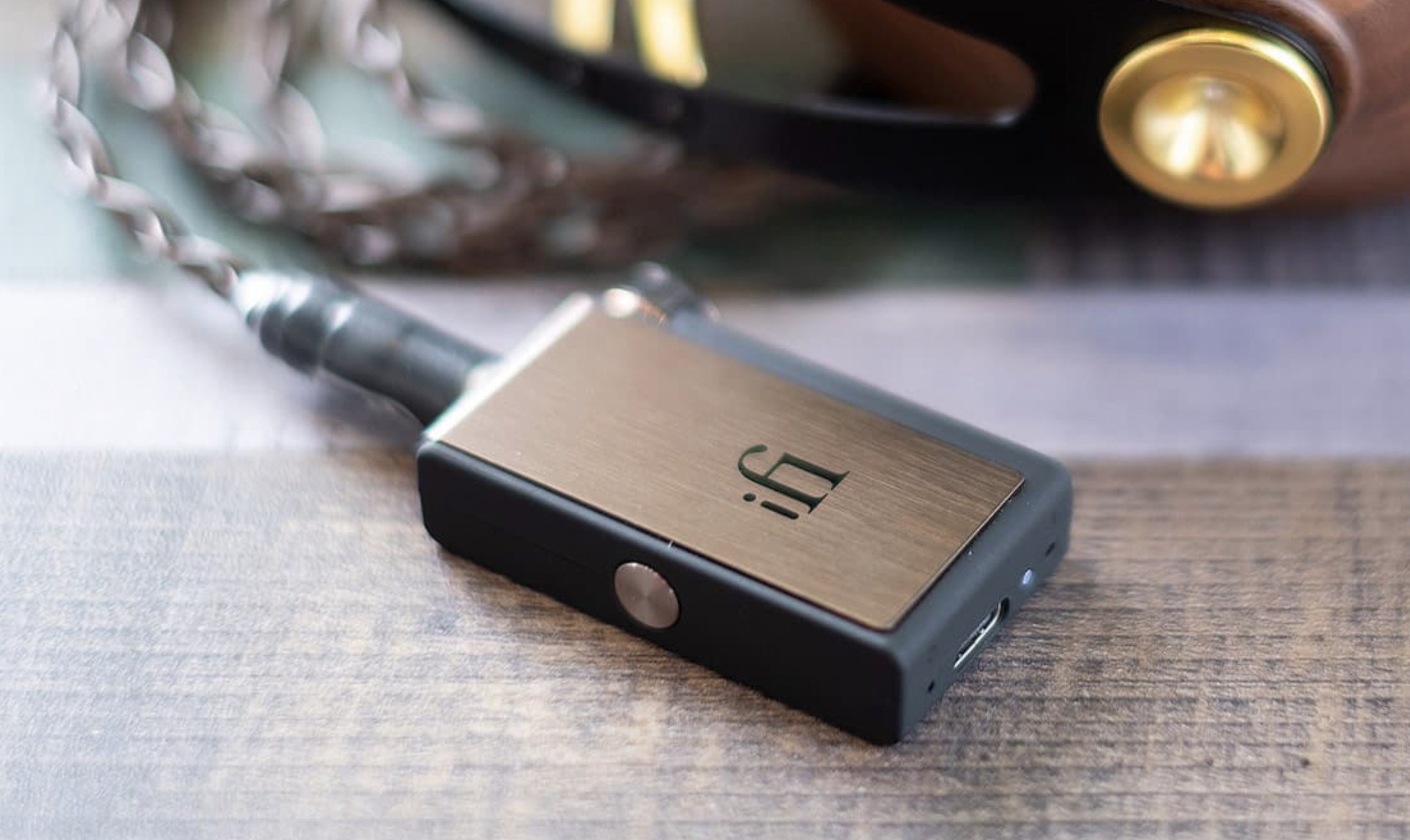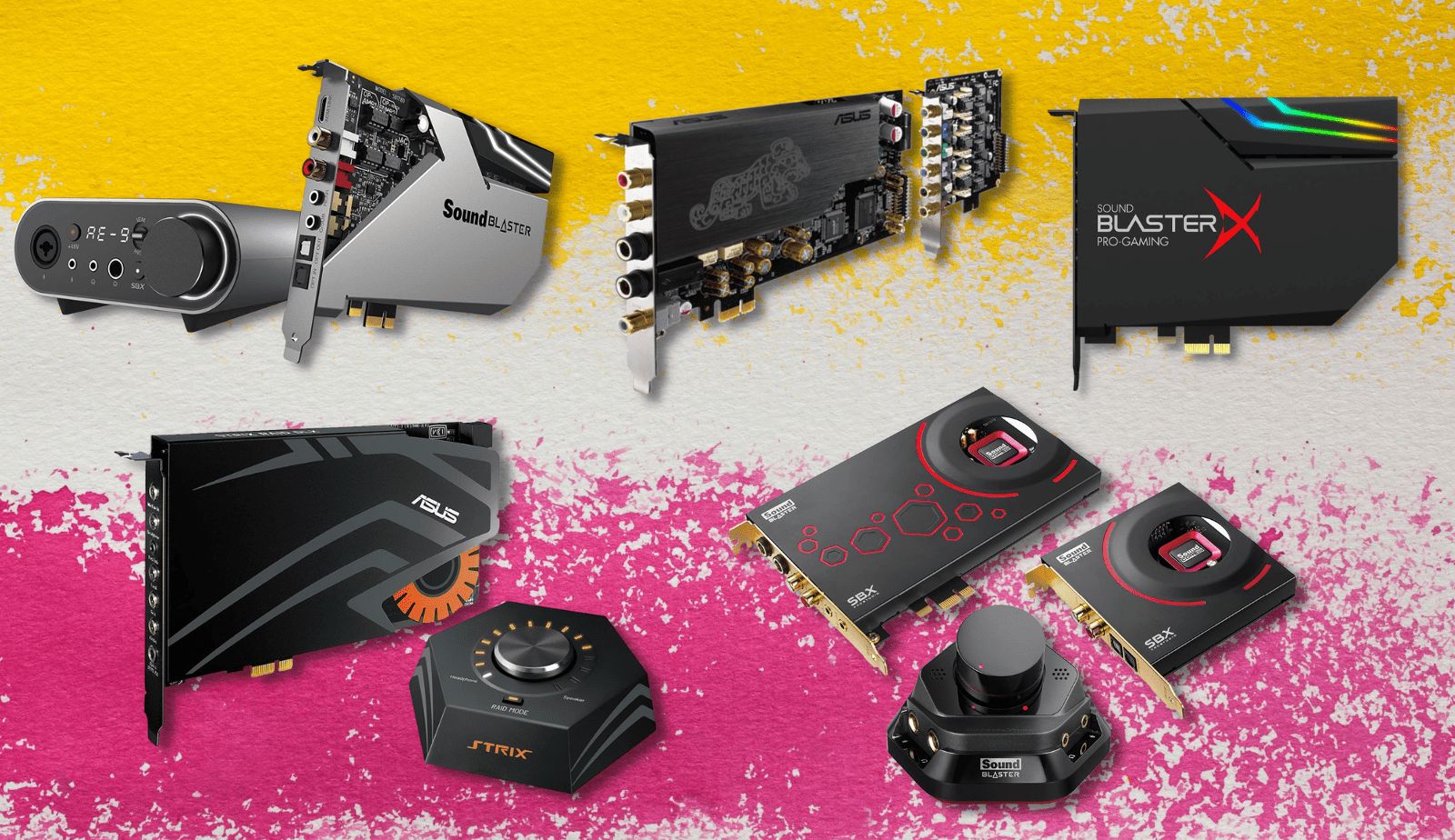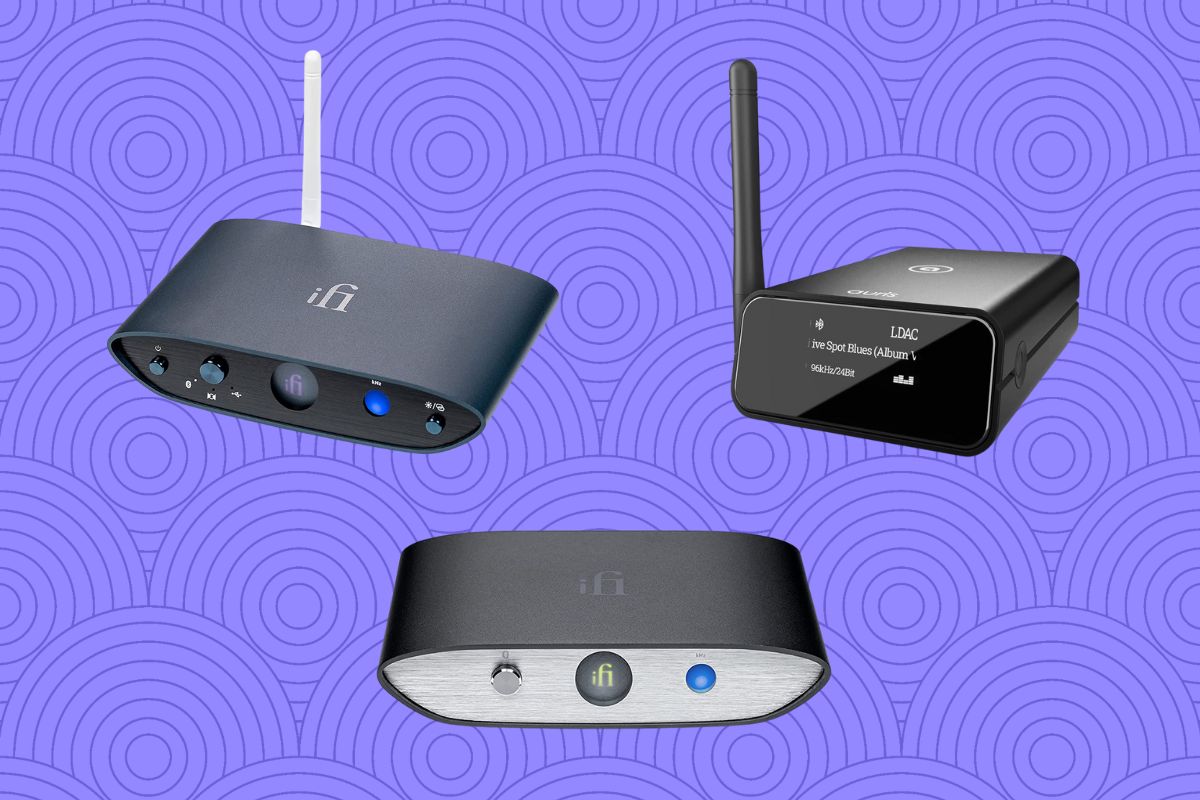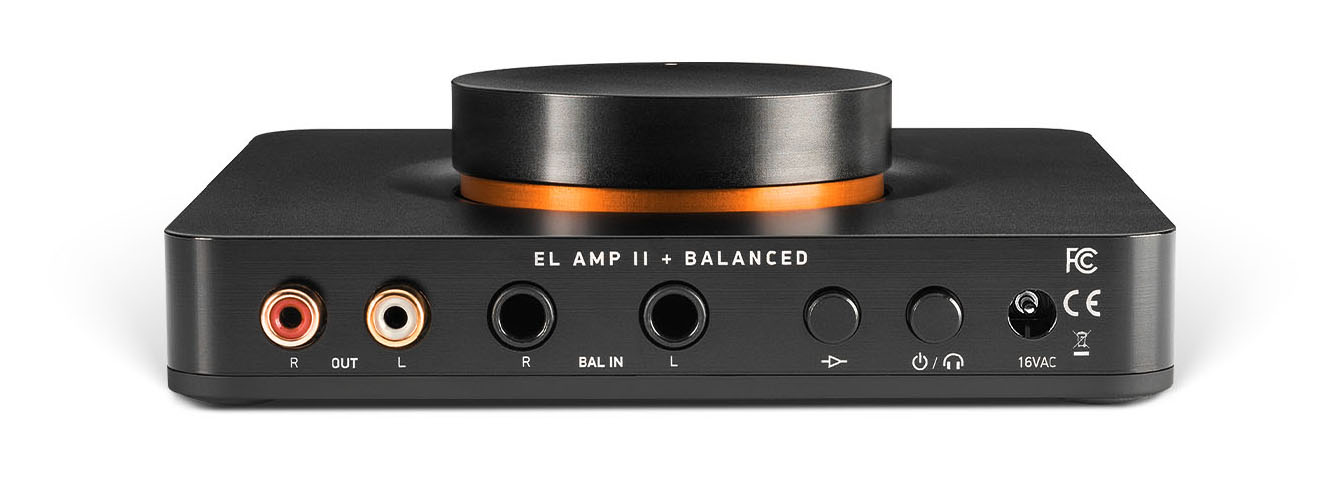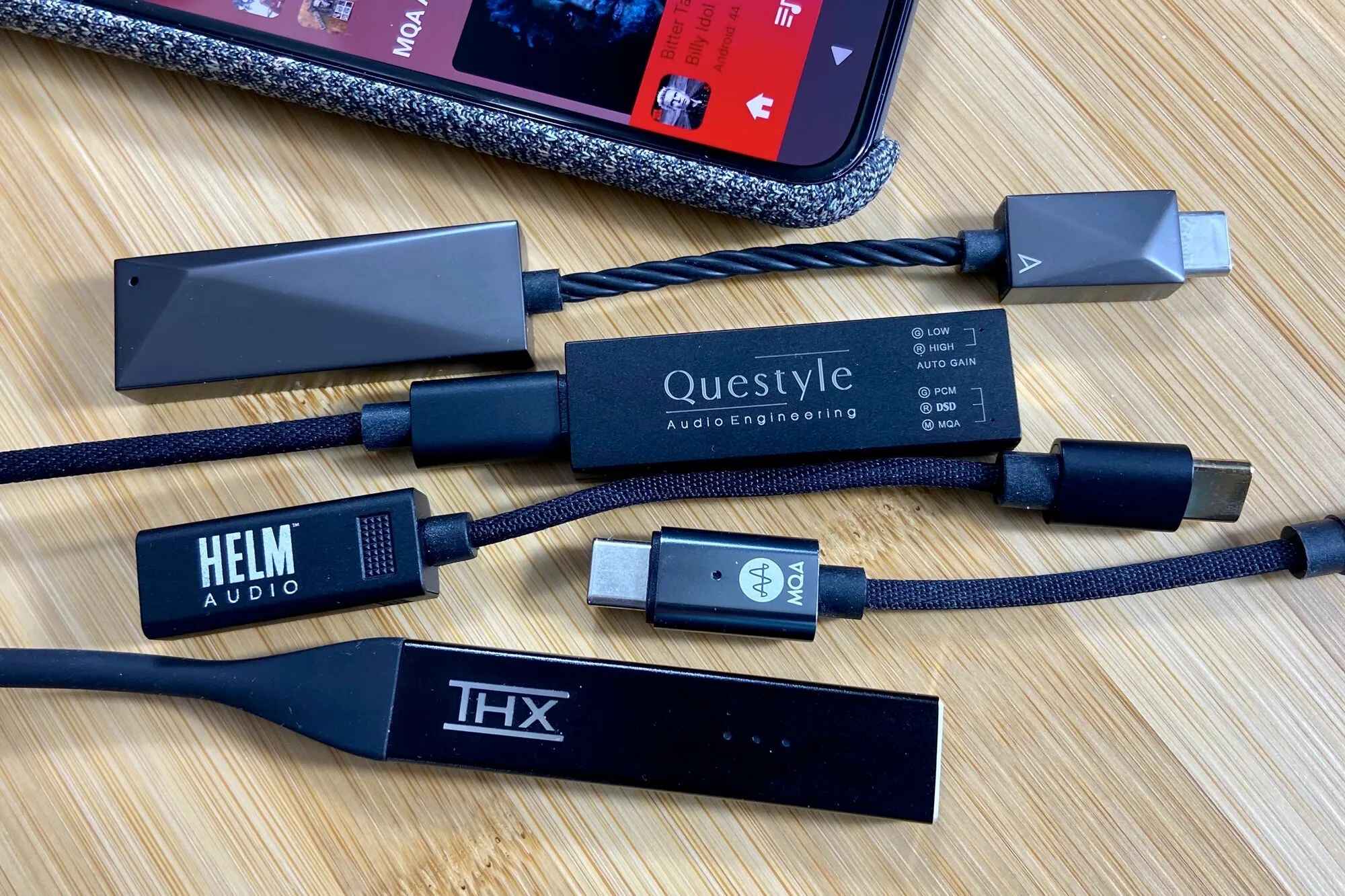Introduction
In the world of high-fidelity audio, the pursuit of pristine sound quality is a never-ending journey. Audiophiles and music enthusiasts are constantly seeking ways to enhance their listening experience, and one crucial aspect of this quest involves optimizing the connection between CD players and external digital-to-analog converters (DACs).
The link between CD players and external DACs plays a pivotal role in delivering superior audio performance. By understanding the intricacies of this connection and its potential impact, enthusiasts can unlock a new dimension of sonic clarity and detail in their music playback.
In this comprehensive guide, we will delve into the nuances of connecting CD players to external DACs, exploring the benefits, types of connections, and a step-by-step guide to facilitate this process. Additionally, we will provide valuable tips for optimizing the connection to ensure an immersive and enriching listening experience.
By the end of this article, you will have a deeper understanding of how the integration of CD players and external DACs can elevate the audio fidelity of your music, allowing you to savor the subtle nuances and intricacies of each composition with unprecedented clarity and depth. Let's embark on this journey to unravel the potential of this audiophile connection and elevate your listening experience to new heights.
Understanding CD Players and External DACs
In the realm of high-fidelity audio, CD players and external digital-to-analog converters (DACs) play pivotal roles in the reproduction of music with exceptional clarity and precision. Understanding the functions and capabilities of these components is essential for discerning audiophiles seeking to elevate their listening experience.
CD Players: A CD player, also known as a CD transport, serves as the source component in a traditional audio system. Its primary function is to read digital audio data from compact discs and convert it into an analog signal that can be amplified and played through speakers or headphones. CD players typically employ internal DACs to perform this conversion process, although the quality of these built-in DACs can vary significantly across different models.
External DACs: An external DAC, on the other hand, is a standalone device designed to convert digital audio signals into analog waveforms with utmost precision. By utilizing advanced digital processing and high-quality analog circuitry, external DACs can offer superior performance compared to the internal DACs found in most CD players. These devices are renowned for their ability to minimize signal distortion, reduce noise, and extract finer details from digital audio sources, resulting in a more faithful reproduction of the original music.
Distinguishing Features: External DACs often incorporate advanced features such as asynchronous USB input, support for high-resolution audio formats, and sophisticated clocking mechanisms to ensure accurate signal processing. Moreover, some DACs offer customizable digital filters and sound-shaping options, allowing users to tailor the audio output to their preferences.
Enhanced Audio Fidelity: When a CD player is connected to an external DAC, the digital audio data is transmitted in its purest form to the DAC, bypassing the internal conversion processes of the CD player. This direct digital link enables the external DAC to unleash the full potential of the audio data, resulting in a more transparent, detailed, and lifelike sonic presentation.
By comprehending the roles and capabilities of CD players and external DACs, enthusiasts can appreciate the significance of integrating these components to achieve unparalleled audio fidelity. This understanding forms the foundation for exploring the benefits and intricacies of connecting CD players to external DACs, which we will delve into in the subsequent sections of this guide.
Benefits of Connecting CD Players to External DACs
Connecting a CD player to an external digital-to-analog converter (DAC) yields a myriad of advantages, each contributing to an elevated audio experience that resonates with audiophiles and music enthusiasts. By bridging these components, enthusiasts can unlock a realm of sonic refinement and immersive musicality that transcends conventional playback systems. Let's explore the compelling benefits of this integration:
1. Enhanced Audio Fidelity:
The foremost benefit of linking CD players to external DACs lies in the substantial enhancement of audio fidelity. External DACs, renowned for their superior digital-to-analog conversion capabilities, have the potential to extract finer details from digital audio sources, resulting in a more faithful reproduction of the original music. This heightened precision and transparency contribute to a more immersive and lifelike sonic presentation, allowing listeners to discern subtle nuances and intricacies within their favorite compositions with unprecedented clarity.
2. Improved Signal Processing:
By leveraging the advanced processing capabilities of external DACs, the digital audio data from CD players undergoes optimized signal processing, minimizing distortion and noise while preserving the integrity of the audio signal. This refined signal processing translates into a cleaner, more articulate audio output, free from the artifacts and limitations that can arise from internal DACs within CD players.
3. Expanded Compatibility and Flexibility:
Many external DACs offer a diverse array of input options, including USB, optical, and coaxial connections, thereby expanding the compatibility and flexibility of the audio system. This versatility enables seamless integration with various digital audio sources beyond CD players, such as computers, media players, and streaming devices, empowering users to enjoy high-fidelity audio from a multitude of sources through a unified, high-performance DAC.
4. Customizable Sound Shaping:
Certain external DACs feature customizable digital filters and sound-shaping options, allowing users to tailor the audio output to their preferences. This capability empowers enthusiasts to fine-tune the sonic characteristics of their audio system, adjusting parameters such as tonal balance, spatial imaging, and transient response to achieve a personalized listening experience that aligns with their sonic preferences and the unique attributes of their listening environment.
5. Future-Proofing Audio Systems:
By integrating an external DAC with a CD player, audio enthusiasts can future-proof their systems, as many high-quality DACs are designed to support a wide range of audio formats, including high-resolution and ultra-high-definition formats. This forward compatibility ensures that the audio system remains capable of handling emerging audio technologies and formats, safeguarding the investment and prolonging the relevance of the setup in the rapidly evolving landscape of digital audio.
In essence, the integration of CD players with external DACs yields a transformative audio experience, characterized by heightened fidelity, refined signal processing, expanded compatibility, customizable sound shaping, and future-proofing capabilities. These benefits collectively contribute to an immersive, nuanced, and deeply engaging listening experience, elevating the enjoyment of music to new heights.
Types of Connections for CD Players and External DACs
When integrating a CD player with an external digital-to-analog converter (DAC), the choice of connection method plays a crucial role in determining the quality and stability of the audio signal transmission. Various types of connections exist, each offering distinct advantages and considerations. Understanding these connection options is essential for enthusiasts seeking to optimize the link between CD players and external DACs. Let's explore the common types of connections utilized for this integration:
1. Coaxial Digital Connection:
A coaxial digital connection, often facilitated by RCA connectors, allows for the transmission of digital audio signals between the CD player and the external DAC. This connection method is characterized by its simplicity and widespread compatibility, making it a popular choice for audiophiles seeking a straightforward and reliable interface for transmitting digital audio data. The coaxial digital connection can support high-resolution audio formats and is known for its robustness in maintaining signal integrity over extended cable lengths.
2. Optical Digital Connection:
An optical digital connection, also known as TOSLINK or SPDIF, utilizes fiber optic cables to transmit digital audio signals in the form of light pulses. This connection method offers immunity to electromagnetic interference and ground loop issues, making it an attractive option for audio systems situated in electrically noisy environments. The optical digital connection is prized for its ability to deliver pristine audio transmission, free from the potential distortions that can arise from electrical interference.
3. USB Connection:
The USB connection serves as a versatile and high-performance interface for linking CD players to external DACs. With advancements in USB audio technology, many modern DACs feature asynchronous USB input, enabling precise control over the data transfer process and minimizing timing errors that can impact audio quality. USB connections are well-suited for handling high-resolution audio formats and offer seamless integration with computer-based audio sources, making them a preferred choice for audiophiles seeking flexibility and future-proofing capabilities.
4. Balanced XLR Connection:
For audiophiles prioritizing balanced audio transmission and noise rejection, the balanced XLR connection presents an appealing option for connecting CD players to external DACs. This connection method utilizes XLR cables and connectors to transmit audio signals with balanced differential signaling, effectively canceling out common-mode noise and enhancing signal integrity. The balanced XLR connection is favored for its ability to deliver pristine audio quality, making it a preferred choice for high-end audio systems and professional audio applications.
5. Wireless Connection:
With advancements in wireless audio technology, some external DACs offer wireless connectivity options, such as Bluetooth or Wi-Fi. These wireless connections provide convenient and cable-free integration with CD players, offering flexibility in system setup and placement. While wireless connections offer convenience, it's essential to ensure that the chosen wireless protocol supports high-fidelity audio transmission without compromising signal quality or introducing latency issues.
By understanding the characteristics and considerations associated with these connection options, audiophiles can make informed decisions when establishing the link between CD players and external DACs. Each connection method offers unique attributes and performance characteristics, allowing enthusiasts to tailor the integration to their specific audio preferences and system requirements. The selection of the appropriate connection type is pivotal in optimizing the audio fidelity and stability of the CD player-external DAC integration, ultimately contributing to a more immersive and captivating listening experience.
Step-by-Step Guide to Connecting CD Players to External DACs
-
Selecting the Connection Type: Begin by identifying the most suitable connection type based on the available interfaces on your CD player and external DAC. Whether it's a coaxial digital, optical digital, USB, balanced XLR, or wireless connection, ensure compatibility and consider the specific attributes of each connection method.
-
Gathering the Necessary Cables: Acquire high-quality cables that correspond to the chosen connection type. For instance, if opting for a coaxial digital connection, obtain RCA cables, while an optical digital connection requires TOSLINK or SPDIF cables. USB connections may necessitate USB Type-A to Type-B or Type-C cables, depending on the DAC's input.
-
Power Off and Unplug: Prior to making any connections, power off your CD player, external DAC, and amplifier if applicable. Unplug the devices from the power source to prevent any electrical mishaps during the connection process.
-
Locating the Digital Output on the CD Player: Identify the digital output port on your CD player, which may be labeled as "Coaxial Out," "Optical Out," or "USB Out," depending on the available options. This port is where the digital audio signal will be transmitted from the CD player to the external DAC.
-
Locating the Digital Input on the External DAC: Similarly, locate the corresponding digital input port on the external DAC, which may be labeled as "Coaxial In," "Optical In," "USB In," or "Wireless In." This is where the digital audio signal from the CD player will be received and processed by the DAC.
-
Connecting the Cables: With the appropriate cables in hand, connect the digital output port of the CD player to the corresponding digital input port of the external DAC. Ensure a secure and snug connection to minimize signal interference and maintain signal integrity.
-
Power On and Test the Connection: Once the connections are established, power on the CD player and external DAC. Verify that the devices recognize each other and that the audio signal is successfully transmitted from the CD player to the DAC.
-
Adjusting Settings (if necessary): Depending on the specific features of your external DAC, you may need to adjust input settings, such as selecting the input source or configuring digital filter options. Refer to the DAC's user manual for guidance on optimizing the settings for seamless integration with the CD player.
-
Verifying Audio Output: Play a familiar audio track through the CD player and listen attentively to the audio output. Assess the tonal balance, detail retrieval, and overall sonic characteristics to gauge the impact of the CD player-external DAC connection on the audio fidelity.
-
Fine-Tuning and Enjoying: If necessary, fine-tune the settings on the external DAC to align with your sonic preferences. Once satisfied, revel in the heightened audio fidelity and immersive musicality facilitated by the integrated CD player-external DAC setup.
By following this step-by-step guide, enthusiasts can seamlessly establish a robust and optimized connection between their CD players and external DACs, unlocking the potential for unparalleled audio fidelity and an enriching listening experience.
Tips for Optimizing the Connection
-
Cable Quality Matters: Invest in high-quality cables to ensure optimal signal transmission between the CD player and the external DAC. Look for cables with sturdy connectors, effective shielding, and minimal signal loss to maintain the integrity of the digital audio data throughout the transmission process.
-
Minimize Cable Length: Whenever possible, aim to keep the cable length between the CD player and the external DAC as short as feasible. Shorter cables help reduce signal degradation and electromagnetic interference, preserving the fidelity of the audio signal as it travels from the source to the DAC.
-
Consider Grounding and Isolation: In scenarios where ground loop issues or electrical interference may impact the audio signal, consider employing grounding techniques or isolation devices to mitigate these potential disturbances. Ground loop isolators and balanced connections can help minimize unwanted noise and ensure a cleaner audio transmission.
-
Optimize Power Supply: Pay attention to the power supply for both the CD player and the external DAC. Utilizing high-quality power cables and implementing power conditioning solutions can contribute to a more stable and noise-free electrical environment, positively influencing the performance of the audio system.
-
Firmware and Driver Updates: If the external DAC incorporates firmware or requires specific drivers for optimal functionality, ensure that the device is updated with the latest firmware and compatible drivers. This proactive approach can address potential compatibility issues and enhance the overall stability of the CD player-DAC connection.
-
Room for Ventilation and Placement: Properly position the CD player and external DAC in a well-ventilated and acoustically favorable environment. Adequate ventilation helps prevent heat buildup, while thoughtful placement can minimize potential interference from other electronic devices, contributing to a more stable and interference-free audio transmission.
-
Explore Signal Processing Options: Delve into the signal processing capabilities of the external DAC, such as digital filters, upsampling options, and sound-shaping features. Experimenting with these settings can allow you to tailor the audio output to your sonic preferences and the unique characteristics of your listening space, further optimizing the connection for an immersive listening experience.
-
Regular Maintenance and Inspection: Periodically inspect the connection points, cables, and overall setup to ensure that the integration between the CD player and the external DAC remains robust and free from potential issues. Address any signs of wear or degradation in cables and connectors to uphold the integrity of the audio transmission.
By implementing these tips, audiophiles can fine-tune the connection between CD players and external DACs, optimizing the integration for exceptional audio fidelity and a truly captivating listening experience.
Conclusion
In the realm of high-fidelity audio, the integration of CD players with external digital-to-analog converters (DACs) represents a transformative journey toward unlocking the full potential of music playback. Through this comprehensive guide, we have ventured into the intricacies of connecting CD players to external DACs, unraveling the profound impact and benefits of this integration. By bridging these components, enthusiasts embark on a path that leads to heightened audio fidelity, refined signal processing, expanded compatibility, and customizable sound shaping, ultimately culminating in an immersive and captivating listening experience.
The process of connecting CD players to external DACs involves a deliberate selection of connection types, meticulous cable considerations, and thoughtful integration steps. Each facet of this integration is imbued with the potential to elevate the sonic presentation, allowing enthusiasts to savor the nuances and intricacies of their favorite compositions with unprecedented clarity and depth. Whether opting for coaxial digital, optical digital, USB, balanced XLR, or wireless connections, the choice of connection method carries profound implications for the fidelity and stability of the audio signal transmission.
As audiophiles embark on the endeavor of integrating CD players with external DACs, the pursuit of optimal cable quality, minimized signal degradation, and strategic placement considerations becomes pivotal. By embracing these principles and leveraging the tips for optimizing the connection, enthusiasts can fine-tune the integration to resonate with their sonic preferences and elevate the listening experience to new heights.
In essence, the integration of CD players with external DACs transcends the realm of mere audio reproduction, forging a profound connection between the listener and the music. It empowers enthusiasts to engage with their favorite compositions on a deeper level, unveiling layers of sonic detail and emotional resonance that were previously concealed. This integration is a testament to the relentless pursuit of audio excellence, where each note, each melody, and each sonic texture is presented with unparalleled fidelity and authenticity.
With a deeper understanding of the benefits, connection types, integration process, and optimization tips, audiophiles are poised to embark on a journey of sonic discovery, where the integration of CD players with external DACs becomes a conduit for transcendent musical experiences. As the final notes of this guide resonate, the stage is set for enthusiasts to embark on this transformative journey, where the fusion of technology and artistry converges to redefine the boundaries of audio excellence.







